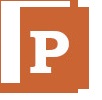De la dualidad de la Chakana pregunta al pensamiento crítico, una estrategia para producir textos
DOI:
https://doi.org/10.35305/rp.v14i36.685Abstract
The present research aims to use the Chakana question to write an argumentative text based on the central vertical analysis. This is a qualitative-propositional and experimental study that describes the Chakana question as a didactic strategy that develops critical thinking, through three questions selected from nine. The results are significant because, through three questions, critical thinking is developed, considering the contribution of Paulo Freire in the critical interpretation of Zaylín Brito Lorenzo (text of 665 words). Eighteen sources have been used, of which 50 % are books. Among the quotations, only two are longer than 40 words in order to achieve critical thinking as a result. It is concluded that the Chakana question is a didactic strategy that develops critical thinking through the exercise of autonomy by selecting only one of the six levels of analysis. The selected questions became a space for the critique of Paulo Freire's thought and the relationships established between popular education and the libertarian sense within an emerging and libertarian school today.Downloads
References
Birchenall, L., y Muller, O. (2014). La teoría lingüística de Noam Chomsky: del inicio a la actualidad. Lenguaje, 42(2), 417-442.
Bocanegra, B. (2021). El exante y expost del pensamiento crítico de la Chakana Pregunta. Revista Boletín Redipe, 10(1), 259-271.
Bunge, M. (1983). Lingüística y filosofía. Ariel.
Chirán, R., y Burbano, M. (2012). La dualidad andina del pueblo Pasto, principio filosófico ancestral inmerso en el tejido del guanga y la espiritualidad. Plumilla Educativa, 11(1), 136-156.
Cols, E. (2011). Estilos de enseñanza. HomoSapiens.
Corradini, M. (2011). Crear. Cómo se desarrolla la mente creativa. Narcea.
De Bono, E. (2017). El pensamiento lateral. Paidós.
De Zubiría. J. (2015). Los modelos pedagógicos. Magisterio.
Kaufman, A. (2015). Leer y escribir: el día a día en las aulas. Aique.
Moore, J. (1984). Conceptual Contributions of Kantor's Interbehavioral Psychology. The Behavior Analyst, 7, 183-187.
Packer, M. (2018). La ciencia de la investigación cualitativa. DGP.
Páez Martínez, R.M., Rondón Herrera, G.M. y Trejo Catalán, J.H. (Ed.) (2018). Formación docente transformadora para liberar la educación. Paulo Freire y la Pedagogía del oprimido. Clacso.
Socarrás, Y., Madrigal, D., y Delgado, A. (2021). Significado cultural del “Conjunto Monumentario San Juan” en la ciudad de Bayamo (Cuba). El doble discurso en las voces de los comunitarios. Revista Páginas, 13(33).
Tillería, L. (2021). La filosofía de la mente de Jerry Fodor. Sophia, Colección de Filosofía de la Educación, (30), 155-171.
Trujillo, R. (1976). Elementos de semántica lingüística. Cátedra.
Verd, J. (2016). Introducción a la investigación cualitativa. Síntesis.
Zarzar, C. (2004). La formación integral del alumno: qué es y cómo propiciarla. Fondo de Cultura Económica.
Zuñe, G., Mejía, J., Caramantin, L., y Bocanegra, B. (2021). Authority and authoritarianism, a dichotomy in the classroom. Religación. Revista de Ciencias Sociales y Humanidades, 6(29), e210822.
Published
How to Cite
Issue
Section
License

This work is licensed under a Creative Commons Attribution-NonCommercial-ShareAlike 4.0 International License.














12.jpg)

1.jpg)









